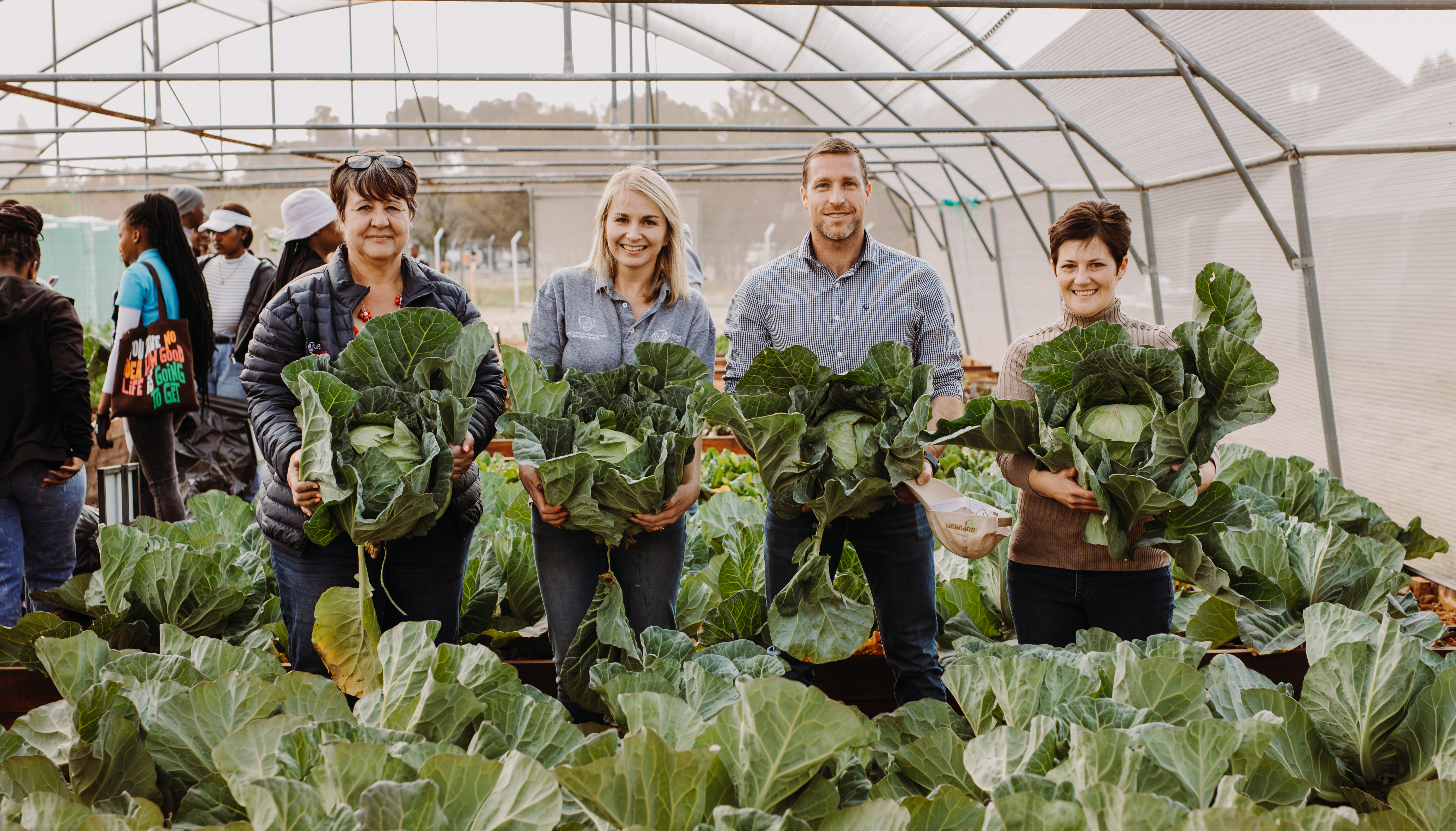There is nothing that says ‘spring’ quite like tree buds, blossoms, butterflies, and bees.
At the University of the Free State (UFS), spring was heralded this year by the dark red of beetroot, the orange of carrots, the green of fresh spinach, and the pale green of big, healthy cabbages, as staff and students celebrated GROW with Thabo Olivier on Spring Day.
UFS research findings indicated that almost two thirds of its students do not know where their next meal will come from. One of the initiatives the university has created to address the issue, is a vegetable production and training programme. The purpose of the programme, which was established by Kovsie ACT in collaboration with the
Department of Sustainable Food Systems and Development and the
Food Environment Office, is to teach students how to produce vegetables.
In an effort to train the wider university community about food production in order to contribute to food security at the UFS,
KovsieACT and the
Food Environment Office, together with the Department of Sustainable Food Systems and Development, presented a lunchtime event: GROW, with food security activist, Thabo Olivier, at the Thakaneng Bridge on the Bloemfontein Campus.
Reuse and repurpose
Olivier, who believes in reuse, reduce, recycle, and repurpose, is of the opinion that one can transform one’s waste into a sustainable garden. He will use what people throw away – from bottles to eggshells to cracked drums – to grow his vegetables. He also makes his own compost and organic pesticides consisting of garlic, chilies, and onions, boiled in water. The extract is then poured through a sieve and sprayed onto his crops through his self-made spray bottle – an old plastic 2 L bottle with holes (made with a pin) at the top.
According to him, no space is too small to grow food. He planted tomatoes in bottles and started his giant pumpkins of 300 to 400 kg in foamalite cups, later transplanting them into a bigger space.
Grow into it
Typing in ‘food insecurity’, one would find that a third of Pakistan is under water, meaning that a large part of their agricultural land has been washed away. According to the World Bank, record high food prices have triggered a global crisis that will drive millions more into extreme poverty, magnifying hunger and malnutrition. The global food crisis has been made worse by the growing number of food trade restrictions put in place by certain countries in reaction to the outbreak of the war in Ukraine.
In Olivier's view, people can only be enslaved through food insecurity. It is his opinion that small organic farms are the start of saving the world. He is planning to create a 100% food secure street in Bloemfontein. He would like to extend this to other suburbs and later to other cities. “Start small with one square metre and grow into it,” he says.
Qualify yourself
Olivier advised that it is important to equip yourself with knowledge. He recommended the short courses of the Centre for Sustainable Agriculture, Rural Development, and Extension at the UFS. “Furthermore, if you do not know anything, you have access to all the information on the phones in your pockets. Find out where your passion lies and qualify yourself,” he says.
Olivier shared his four food growing commandments. He says a person with an excuse will never be able to produce; it is only the person who prepare that will prevail; what you put in is what you get out (also in life); and the best time to start is now.
Teaching others to grow their own food is an essential part of stopping world hunger. “Equip yourself with the knowledge and then teach someone else to plant their own food. If you want to be a leader, start teaching others to grow food. Lead by example and ensure food security,” he says

In an effort to combat food insecurity on campus, a vegetable production and training programme of the UFS not only provides its students with fresh produce, but it also gives them the opportunity to get involved on a voluntary basis in the food production process, including the planting and harvesting of the vegetables. Photo: Anja Aucamp
Harvest and taste
Carien Denner-Vorster from the Department of Sustainable Food Systems and Development did a food demonstration during which she made a beautiful coleslaw with cabbage and carrots from the gardens, which not only inspired students to make their own salad, but also provided the opportunity to taste.
The GROW with Thabo event also included the harvesting of vegetables, more specifically cabbage and spinach, in the gardens opposite Welwitschia Residence.
In 2019,
Dr Jan Swanepoel, Senior Lecturer in the Department of Sustainable Food Systems and Development – with the help of Prof Michael Rudolph from the University of the Witwatersrand – obtained funding from Tiger Brands for two vegetable tunnels. Later, due to the success of the tunnels, Tiger Brands again assisted with the funding of two more tunnels on the UFS Lengau Experimental Farm. These tunnels are in the process of being completed.
Through KovsieAct, students from the residences can volunteer to get involved in the vegetable production programme. According to Annelize Visagie from the Food Environment Office, up to 80 students, most from the
No Student Hungry (NSH) Programme, receive food after each three-day harvest. Anyone who would like to contribute to the NSH programme, can contact her at visagiea@ufs.ac.za